TS
kolonel.bejo
(bertanya) kenapa dulu kita ngak ambil juga F-4 Phantom?
The McDonnell two-place, twinjet, all-weather F-4 Phantom II, with top speeds more than twice that of sound, was one of the most versatile fighters ever built. It served in the first line of more Western air forces than any other jet. Just 31 months after its first flight, the F-4 was the U.S. Navy's fastest, highest-flying and longest-range fighter. It first flew May 27, 1958, and entered service in 1961.
It was named Phantom II on July 3, 1959, during a ceremony held at the McDonnell plant in St. Louis, Mo., to celebrate the company's 20th anniversary. It remained in production until the company's 40th anniversary. By then, the numeral "II" had been discontinued; it had become the only Phantom.
The F-4 established 16 speed, altitude and time-to-climb records. In 1959, its prototype set the world altitude record at 98,556 feet. In 1961, an F-4 set the world speed record at 1,604 mph on a 15-mile circuit. By the end of production in 1985, McDonnell had built 5,068 Phantom IIs and Mitsubishi, in Japan, had built 127.
Modifications incorporated improvements to weapons, avionics, radar and engines. The RF versions were equipped with cameras and surveillance gear for aerial reconnaissance. Armament ranged from cannons to missiles.
F-4s saw combat in both the Vietnam War and Operation Desert Storm and served with the air forces of 11 countries in addition to the United States. Both U.S. military flight demonstration teams, the Navy Blue Angels and the Air Force Thunderbirds, flew the Phantom II from 1969 to 1973.
The 5,000th Phantom was delivered on May 24, 1978, in ceremonies that also marked the 20th anniversary of the fighter's first flight, and McDonnell Douglas delivered the last St. Louis-built Phantom II in October 1979. By 1998, approximately 800 were still in service around the world. With the upgrades already performed and those under contract, the F-4 Phantom II will probably still be flying in 2015 -- nearly 60 years after its first flight.
Specifications
First flight: May 27, 1958 (prototype YF4H-1)
Wingspan: 38 feet 5 inches
Length: 58 feet 3 inches
Height: 16 feet 6 inches
Ceiling: 56,100 feet
Range: 1,750 miles
Weight: 55,597 pounds
Power plant: Two 17,900-pound-thrust General Electric J79-GE-17 jet engines
Speed: 1,485 mph (max.)
Accommodation: Two crew
Armament: 15,983 pounds of weapons, including 20 mm nose-mounted M-61 "Vulcan" cannon
http://www.boeing.com/boeing/history...phantomII.page
++++++++++++++++++++++++++++++++++++++++++++++++++++
kenapa dulu jaman eyang piye kabare kita ngak ambil barang cantik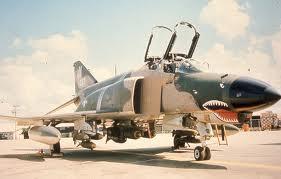 ini juga yaa??padahal dengan kedekatan kita dengan paman samiri harusnya ini mainan bisa diambil. wong a-4 barang harom aja bisa dibawa pulang apalagi yg halal model beginian, kan bekas perang vietnam harusnya bejibun.
ini juga yaa??padahal dengan kedekatan kita dengan paman samiri harusnya ini mainan bisa diambil. wong a-4 barang harom aja bisa dibawa pulang apalagi yg halal model beginian, kan bekas perang vietnam harusnya bejibun.
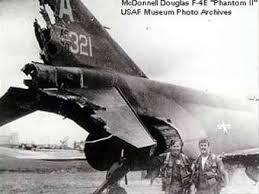
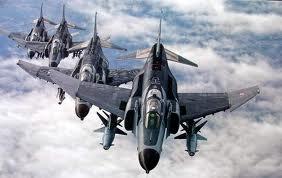
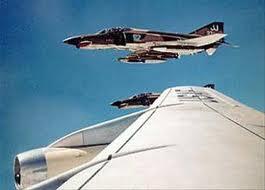
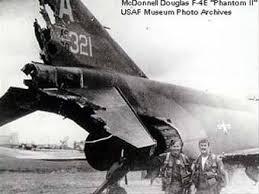
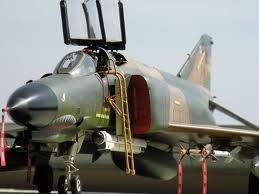
It was named Phantom II on July 3, 1959, during a ceremony held at the McDonnell plant in St. Louis, Mo., to celebrate the company's 20th anniversary. It remained in production until the company's 40th anniversary. By then, the numeral "II" had been discontinued; it had become the only Phantom.
The F-4 established 16 speed, altitude and time-to-climb records. In 1959, its prototype set the world altitude record at 98,556 feet. In 1961, an F-4 set the world speed record at 1,604 mph on a 15-mile circuit. By the end of production in 1985, McDonnell had built 5,068 Phantom IIs and Mitsubishi, in Japan, had built 127.
Modifications incorporated improvements to weapons, avionics, radar and engines. The RF versions were equipped with cameras and surveillance gear for aerial reconnaissance. Armament ranged from cannons to missiles.
F-4s saw combat in both the Vietnam War and Operation Desert Storm and served with the air forces of 11 countries in addition to the United States. Both U.S. military flight demonstration teams, the Navy Blue Angels and the Air Force Thunderbirds, flew the Phantom II from 1969 to 1973.
The 5,000th Phantom was delivered on May 24, 1978, in ceremonies that also marked the 20th anniversary of the fighter's first flight, and McDonnell Douglas delivered the last St. Louis-built Phantom II in October 1979. By 1998, approximately 800 were still in service around the world. With the upgrades already performed and those under contract, the F-4 Phantom II will probably still be flying in 2015 -- nearly 60 years after its first flight.
Specifications
First flight: May 27, 1958 (prototype YF4H-1)
Wingspan: 38 feet 5 inches
Length: 58 feet 3 inches
Height: 16 feet 6 inches
Ceiling: 56,100 feet
Range: 1,750 miles
Weight: 55,597 pounds
Power plant: Two 17,900-pound-thrust General Electric J79-GE-17 jet engines
Speed: 1,485 mph (max.)
Accommodation: Two crew
Armament: 15,983 pounds of weapons, including 20 mm nose-mounted M-61 "Vulcan" cannon
http://www.boeing.com/boeing/history...phantomII.page
++++++++++++++++++++++++++++++++++++++++++++++++++++
kenapa dulu jaman eyang piye kabare kita ngak ambil barang cantik
 ini juga yaa??padahal dengan kedekatan kita dengan paman samiri harusnya ini mainan bisa diambil. wong a-4 barang harom aja bisa dibawa pulang apalagi yg halal model beginian, kan bekas perang vietnam harusnya bejibun.
ini juga yaa??padahal dengan kedekatan kita dengan paman samiri harusnya ini mainan bisa diambil. wong a-4 barang harom aja bisa dibawa pulang apalagi yg halal model beginian, kan bekas perang vietnam harusnya bejibun.




0
9.8K
37
Thread Digembok
Urutan
Terbaru
Terlama
Thread Digembok
Komunitas Pilihan